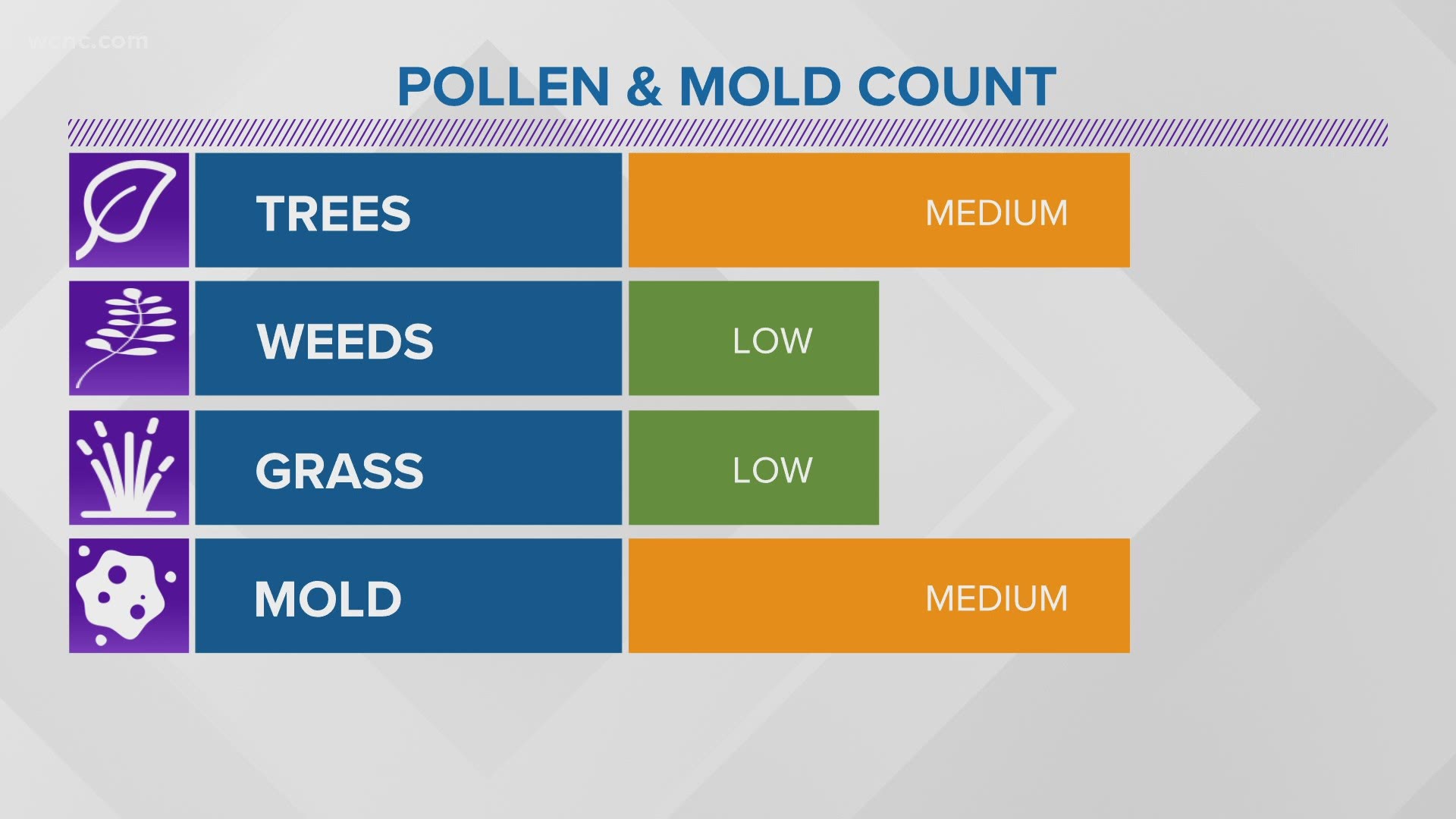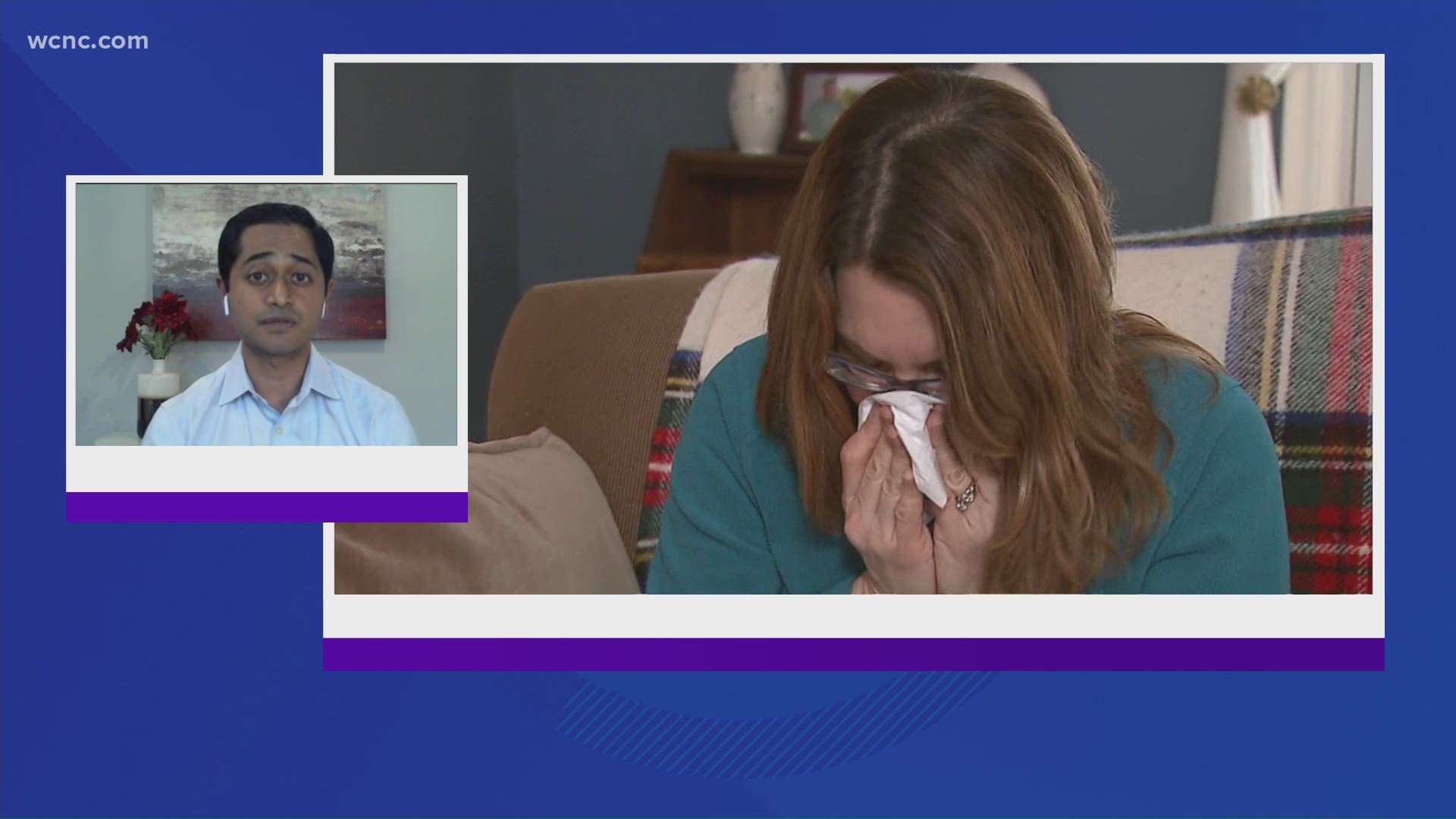CHARLOTTE, N.C. — It’s the first full week of spring, and while many of us love the warmer, drier weather, our noses don’t always love the pollen.
With climbing temperatures and dry, breezy conditions, come rising pollen levels, so, don't be surprised if you notice runny eyes and sneezing.

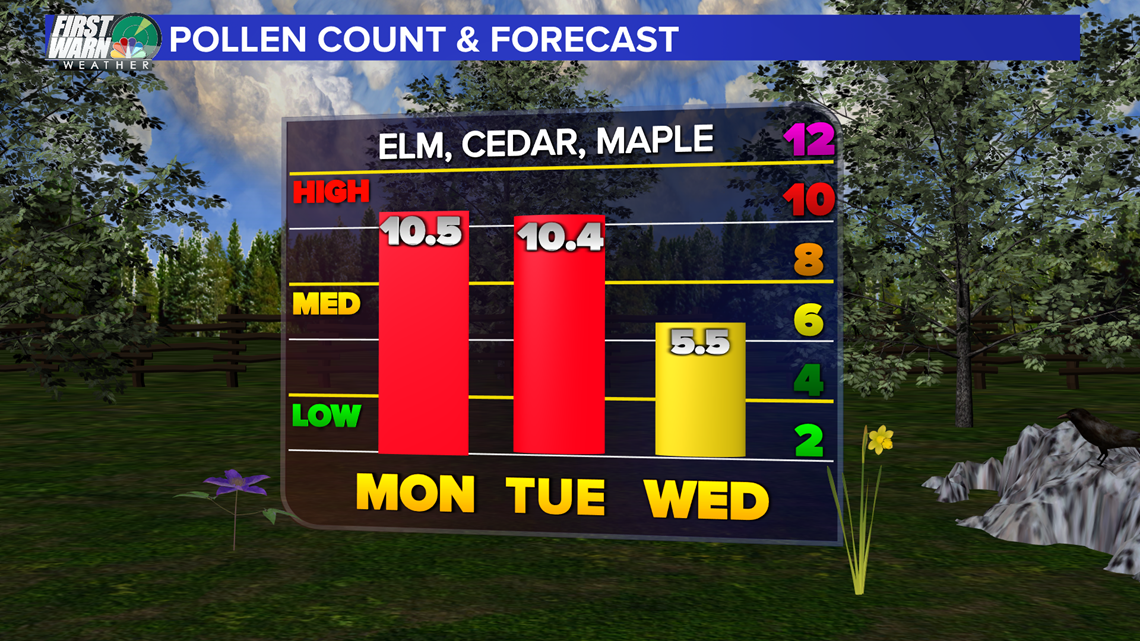
Currently, trees are the top allergen, followed closely by mold. The top tree allergens are cedar, elm and maple.
Weeds and grass pollen levels are currently low.

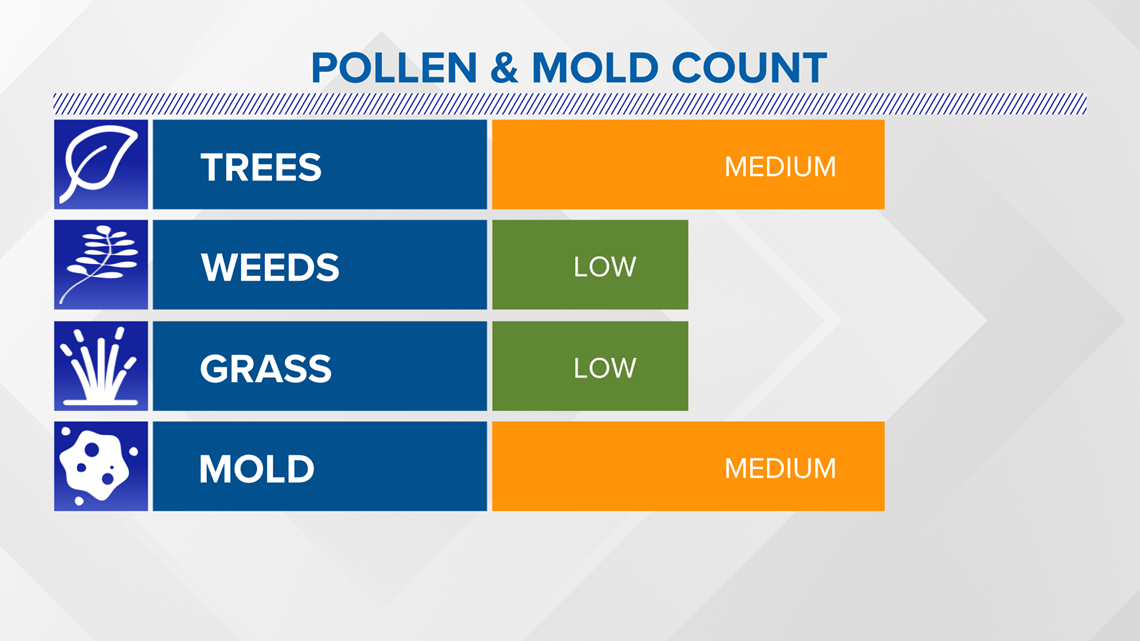
Pollen levels will remain high Tuesday before coming down into the medium category Wednesday as rain chances begin to increase with an approaching cold front.

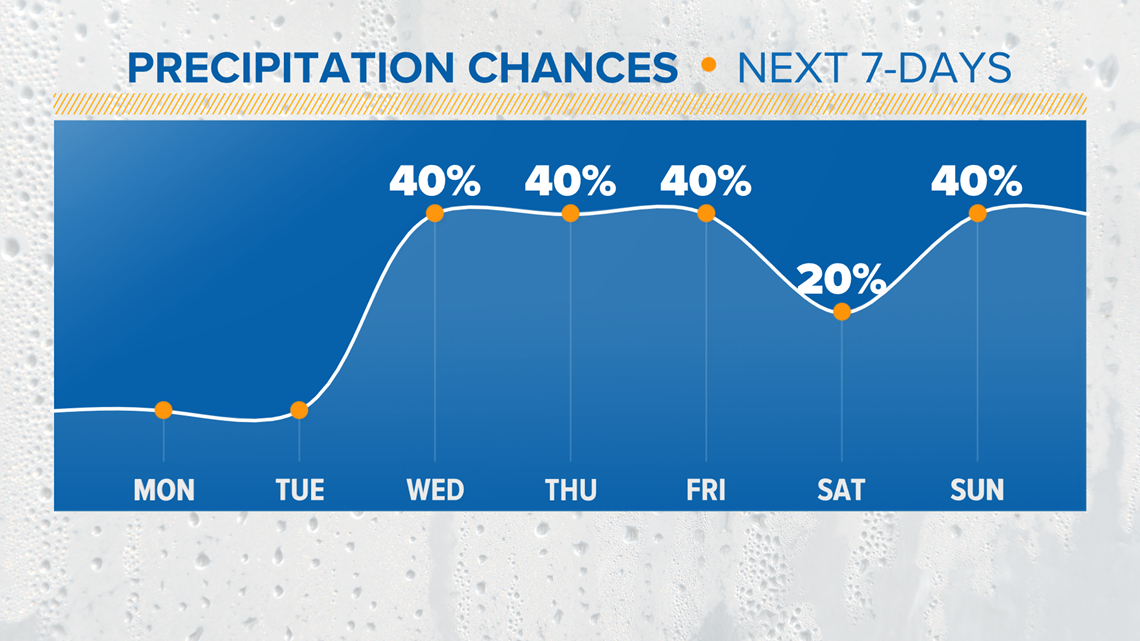
Although, it looks like our best chance of rain will be Thursday into Friday.
With COVID-19 still at the front of our minds, as we begin to sniffle, we may grow concerned we have coronavirus instead of a running nose.
Most of the patients who experience seasonal allergies are able to know their bodies and recognize the symptoms as they come on, which will help to ease their minds when it comes to questioning if they have the new coronavirus.
"They can know the difference between what they're experiencing now and an actual infection," Panagis Galiatsatos, assistant professor at the Johns Hopkins School of Medicine who focuses on pulmonary and critical care medicine, said.
"For a lot of people, it's going to be similar symptoms [each year], I think that's a key thing to recognize. These patients, they'll know the post-nasal drip, they'll know the runny nose, they'll know the cough," he explained.
If someone is unsure, a tell-tale sign that symptoms are pointing to an infection rather than allergies is the presence of a fever. Galiatsatos said allergies will never cause someone to have a fever, unlike COVID-19 or other infections.
He pointed to some other "key things" that can be an indicator of what an individual is suffering from.
"COVID-19... the mildest cases could be a dry cough and a touch of shortness of breath. With allergies, things are really more productive," Galiatsatos explained. "You get a runny nose, a post-nasal drip. It's almost impossible for me to find my patients who just have a dry cough as their first sign of an allergen without having the other respiratory ramifications."
If you are experiencing any of the common symptoms of seasonal allergies, Meadows recommends seeing an allergist to determine what is setting them off.
To combat indoor allergy symptoms, Galiatsatos recommends to his patients that they invest in a HEPA filter and keep it in their most commonly-used room -- likely the bedroom they sleep in. He recommended practicing good hygiene to remove any outdoor allergens. It's best to remove clothing after spending time outdoors, he said, stressing people should especially avoid wearing any clothing that was worn outside to bed at night.

